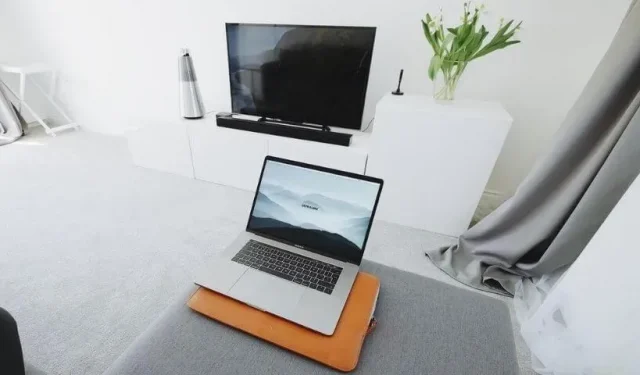Screen mirroring and casting are easy ways to mirror your computer or mobile screen on another device (in this case, Roku TV). Screen mirroring can have its issues, such as screen freezing, but it’s still a popular option for quickly mirroring your PC or mobile on Roku. Follow below to learn how to Screen Mirror from Windows 10 to Roku.
Are screen mirroring and screen casting the same thing?
Both screen mirroring and screen casting have the same purpose which is to display your PC or mobile phone content/media on your TV or any other device. But they are a little different.
With screen mirroring, you practically mirror the entire screen of one device to another. Whatever you see on the mirror device will be visible on the other device. If you mirror your PC screen on Roku, every action on your PC will be visible on Roku TV.
In a screencast, you share the content of an app or some media from one device to another. Only this medium is mirrored. Whatever you do on the streaming device doesn’t show up on the other device. If you stream your computer to Roku TV, only the transferred content will be visible on Roku, and other activities you perform on your computer will not be visible on Roku TV.
How to mirror mirror from Windows 10 to Roku?
- Check if your Windows computer supports Miracast
- Set up Roku TV for screen mirroring
- Start mirroring from your Windows PC
- Get a Microsoft Wireless Display Adapter (alternative)
- Use an HDMI cable (alternative)
1. Check if your Windows computer supports Miracast
Miracast is the screen mirroring standard used by most devices. Roku, Amazon Fire TV, and other devices use Miracast for screen mirroring.
Most versions of Windows 10 and 11 support Miracast, so they’re ready for mirroring. But you must first check if your Windows has Miracast, or you need to install some drivers before starting the mirroring process, or you need an HDMI cable for screen mirroring.
To check if your Windows has Miracast:
- Right-click the desktop and select Display Settings.
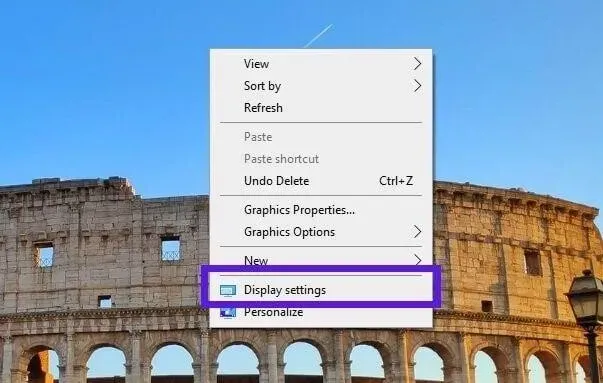
- When the display settings open, scroll down and find the “Multiple Displays”section.
- If you see “Connect to a wireless display”under “Multiple Displays”, you have Miracast. If you don’t see this option, then your Windows doesn’t support it.
If you are skeptical about the above method, follow these steps to confirm that Miracast is available on your Windows computer:
- Open the start menu, type “
dxdiag“and open the application. You can also open it from the Run dialog by pressing the Windows key + R.
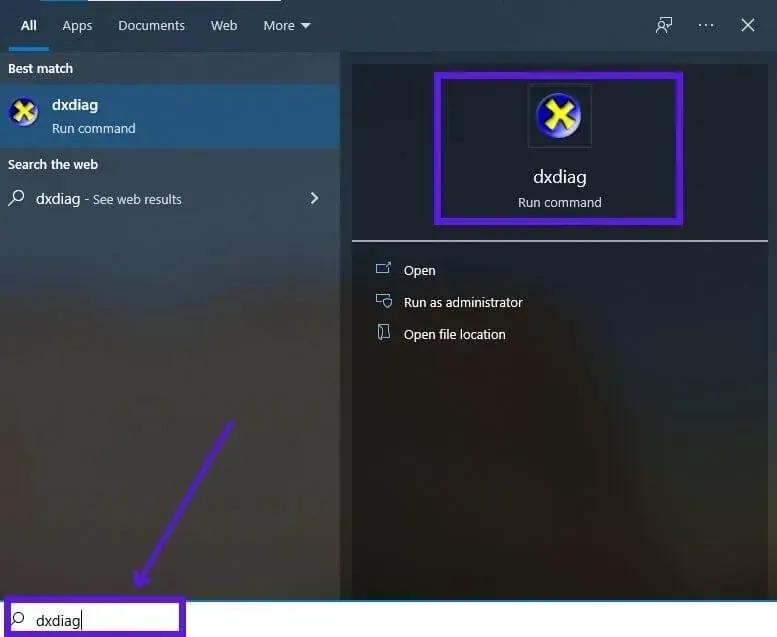
- When the DirectX Diagnostic Tool opens, click Save All Information.

- Save the file to any folder or desktop.
- Open the text file and search for “Miracast”.
- If it says “Available”next to it, your Windows has Miracast. But if you read “Unavailable”, then you don’t have Miracast.
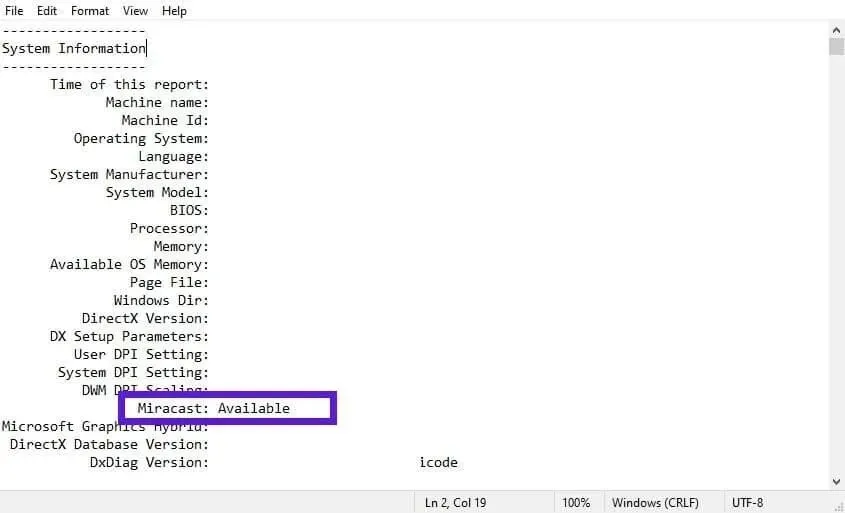
You should update your display drivers and perform Windows Updates and Optional Updates to try and get Miracast.
1.1 Update display drivers
- Open the start menu, type “device manager”and select the first app.
- In Device Manager, click Display Adapters. It will show your graphics adapter.
- Right-click your graphics adapter and select Update Driver.
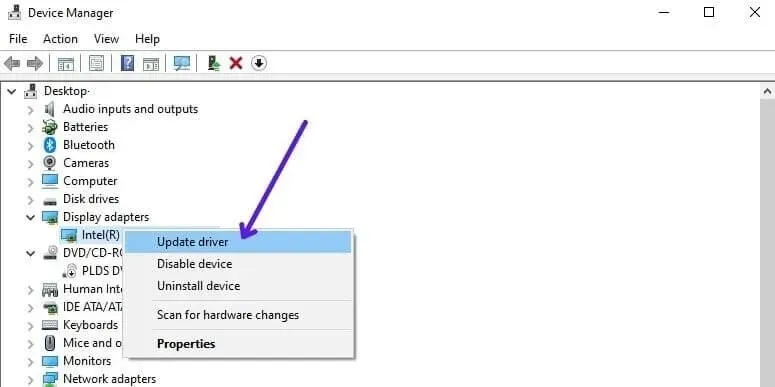
- On the next screen, select “Search for Drivers Automatically”.
- This will update your display drivers.
- Restart your computer.
1.2 Update Windows
- Click start, type “windows updater”and select the application.
- Click the “Check for Updates”button.
- It will look for updates and install them. It will take some time.
1.3 Install optional updates on Windows
Sometimes optional updates include updates to the display driver. If you can’t connect to a Miracast-enabled device, please update everything in the Optional Updates section. Use these steps:
- Open the start menu, type “Windows Updater”and open the app.
- Click Check for Updates.
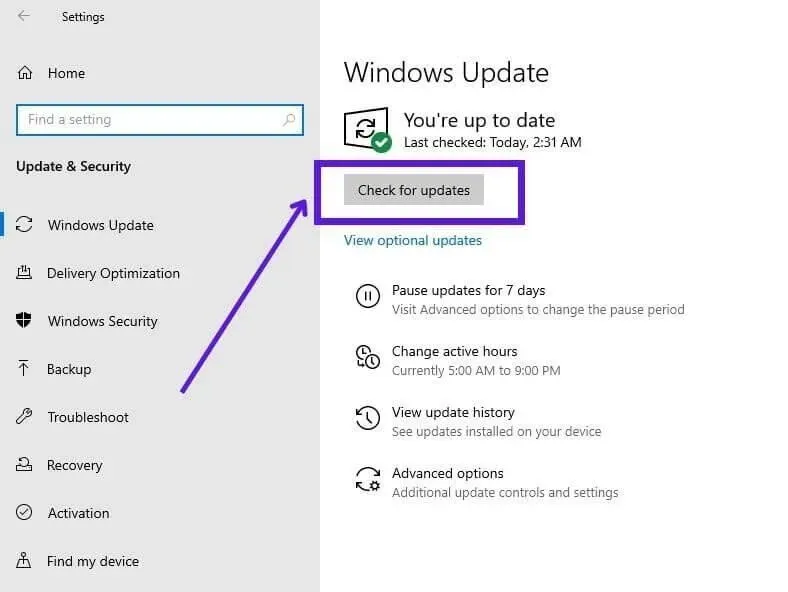
- It will install updates.
- Restart your computer.
- Open Windows Update again and check for updates. Let it install updates.
- Restart your computer.
- Now go to Windows Update again and click on “View optional updates”.
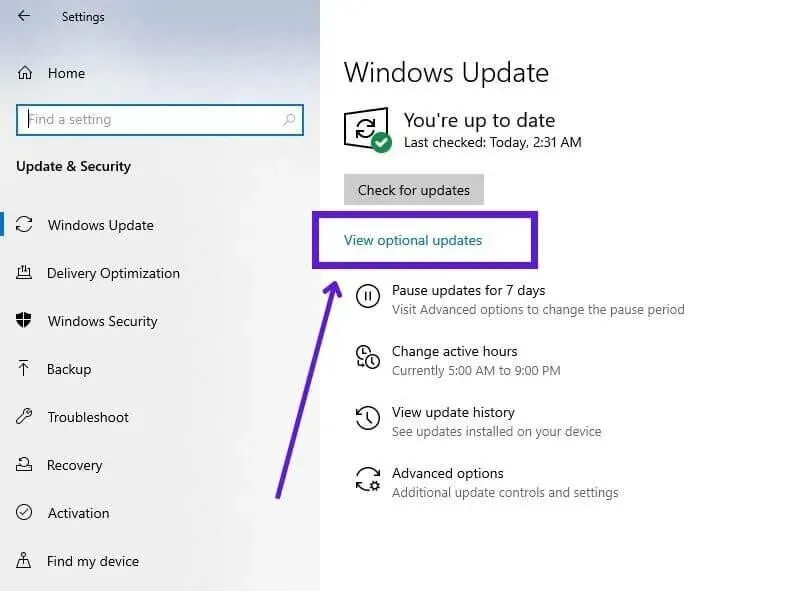
- Select Driver Updates.
- Check all updates or check only graphics driver updates.
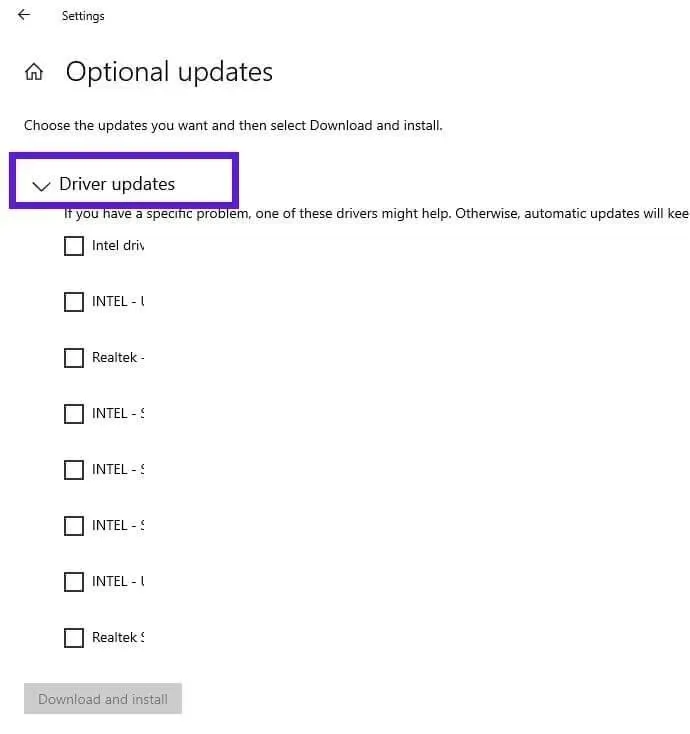
- Click Download and Install.
- Restart your computer.
2. Set up Roku TV for screen mirroring
You need to activate the screen mirroring option in your Roku TV’s settings in order for it to connect to your Windows computer. For smooth screen mirroring, make sure your Roku OS is up to date.
- To update your Roku OS version, press the Home button on the remote control.
- Go to settings.’
- Select System.
- Select System Update.
- Select Check Now.
After updating, follow these steps to prepare Roku for mirroring:
- Press the Home button on your Roku remote.
- Select “Settings”.
- Go to System.

- Select “Screen Mirroring”from the settings menu.

- Select Prompt if you want to be prompted on your TV screen whenever a device tries to connect, or select Always Allow to allow any device that tries to connect to your Roku TV. If you select “Never Allow”, it will refuse to connect to all devices.
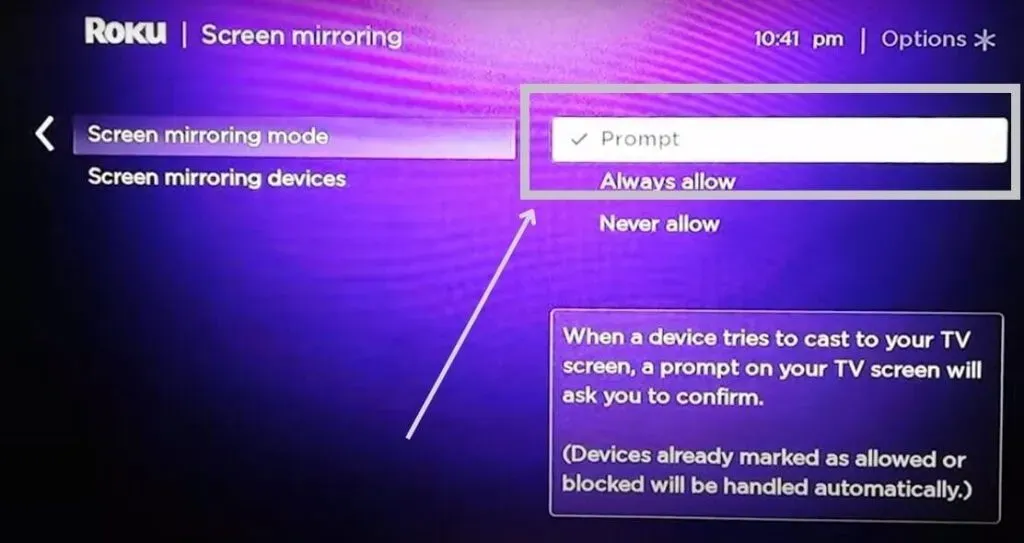
3. Start mirroring from your Windows PC
After setting up your Roku TV, all you have to do is find your wireless displays, select your Roku TV, and connect to it.
- Click the Action Center in the lower right corner of Windows.
- Select Connect.
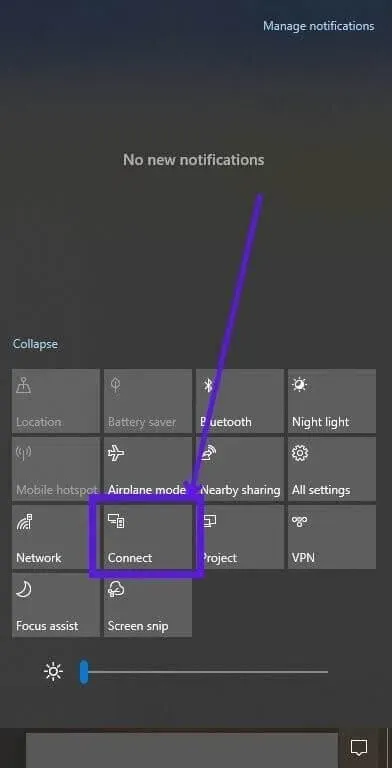
- It will search for wireless displays. Find your Roku TV and connect to it.
- Your Roku TV will receive a quick notification if you have selected “Prompt”in your Roku TV settings. Let it start mirroring your Windows 10 or 11 PC to Roku.
4. Get a Microsoft Wireless Display Adapter (Alternative)
Users who do not have a Miracast-enabled Roku can use the Microsoft Wireless Display Adapter. This is a small device that connects to your Roku and supports Miracast.
- Plug the USB end of the adapter into the USB port and the HDMI end into the HDMI port on the TV.
- On Windows, go to Settings > Devices.
- In the “Bluetooth and other devices”section, select “Add Bluetooth or other device”.
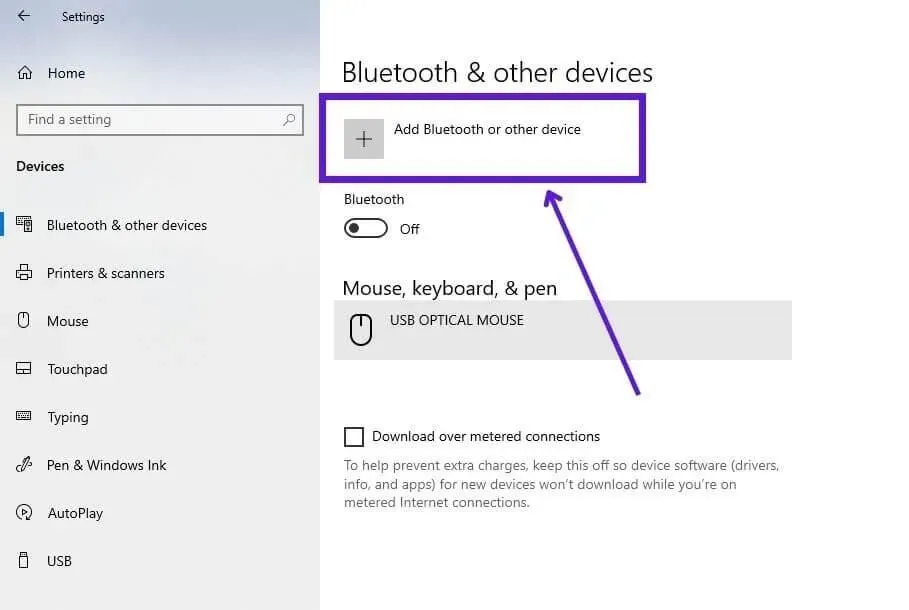
- Select Wireless Display or Dock.
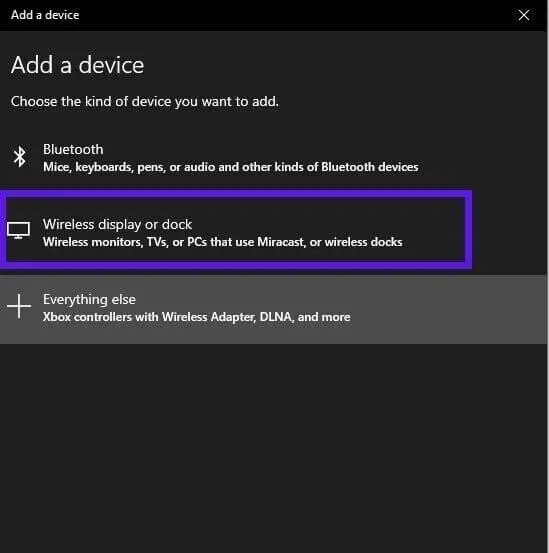
- Here you will find Roku TV. Connect to it.
5. Use an HDMI cable (alternative)
If your Windows PC doesn’t support Miracast, your best option for mirroring your PC to Roku is with an HDMI cable. Wires make your space look cluttered, but they provide a more reliable connection than wireless.
- Get an HDMI cable.
- Plug one end of the cable into your computer and the other end into your TV.
- Start screen mirroring without delay.
How to stream Windows 10 or 11 to Roku TV?
As mentioned earlier, casting only allows you to mirror one app on your Roku. So you can freely use your computer while streaming anything on Roku TV. Every application in Windows will not have the ability to cast. So you can only stream some apps on Roku. We’ll be porting Google Chrome to Roku TV.
- Make sure your computer and Roku TV are connected to the same network.
- Prepare your Roku TV for broadcast by pressing the Home button on your Roku remote and selecting Settings > System > Screen Mirroring > Prompt or Always Allow.
- Open Google Chrome on your Windows laptop and open the tab you want to cast.
- Select the three dots in the top right corner and select “Cast”from the list.
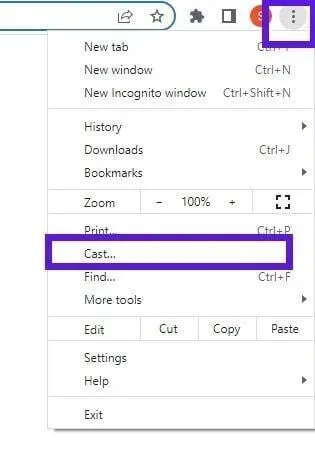
- Select your Roku TV and connect to it.
- Select the current tab.
- If you receive an invitation to Roku, confirm it.
- Cast any file from Google Chrome to Roku TV while doing other things on your Windows PC.
Steps to Mirror Screen from Android to Roku
- Find out if your Android phone has a screen mirroring feature
- Customize Roku
- Start the mirroring process from your Android device
1. Find out if your Android phone has a screen mirroring feature
Most Android phones have a screen mirroring feature and support Miracast, so mirroring an Android phone to Roku TV is very easy.
However, to check if you have the option, follow these steps:
- Open “Settings”on Android.
- Go to Connected devices.
- Look for an option named Broadcast, Screen Mirror, Screen Cast, or something similar. This is different on different android mobile devices.
- If you have the opportunity, you can mirror your Android to Roku.
2. Set up Roku
- Connect your Roku and smartphone to the same network.
- To enable Roku Screen Mirroring, press the Home button on your remote.
- Go to settings’.
- Select System.
- Select Screen Mirroring.
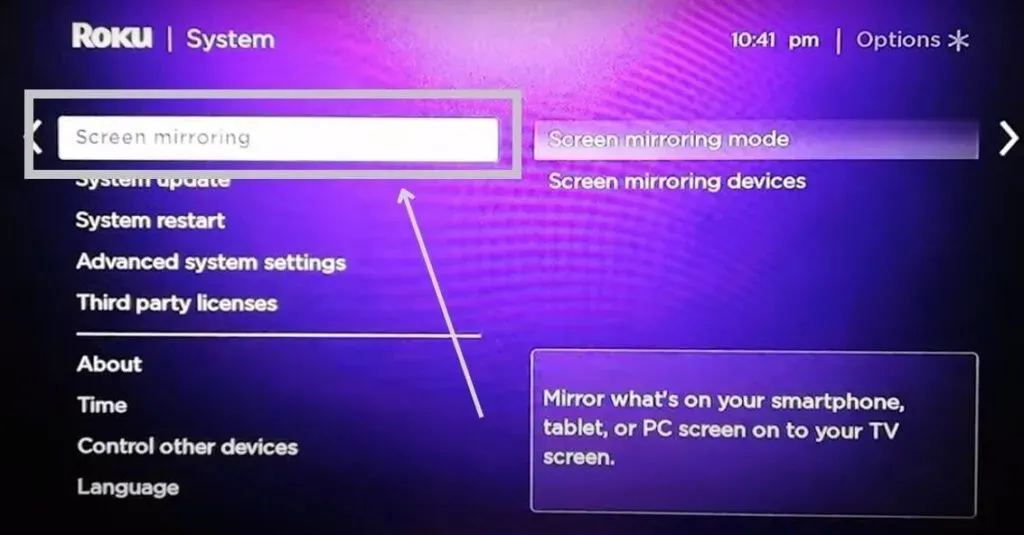
- Select Prompt or Always Allow.
3. Start the mirroring process from your Android device
- On an Android phone, go to Settings > Connected devices > Broadcasting (or any other name like Screen Mirror).
- Click on the three dots in the upper right corner of the screen and check the “Enable Wireless Display”box. Or you can get a “Screencast”option with a toggle to turn it on and off.
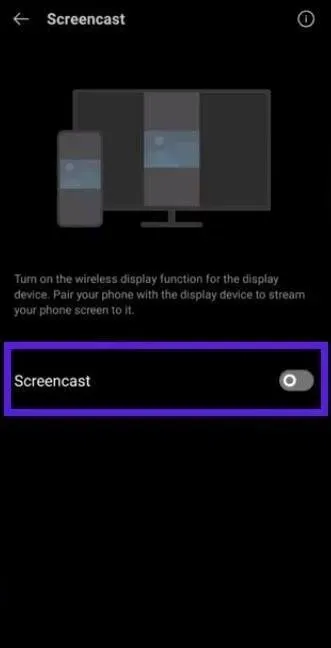
- Your mobile will search for wireless displays. Select Roku TV from the list.
- Confirm if you receive a prompt on your Roku TV.
- Mirror anything from Android to Roku.
How to stream from Android to Roku?
With Cast, you can mirror a specific app to Roku. It doesn’t reflect everything on your Android screen on the Roku TV screen. Only the selected application. We will be porting the YouTube app from Android to Roku.
- Make sure your mobile phone and Roku are on the same network.
- Enable screen mirroring on Roku by going to Settings > System > Screen Mirroring > Prompt or Always Allow.
- Open the YouTube app.
- Tap the broadcast icon at the top of the app.
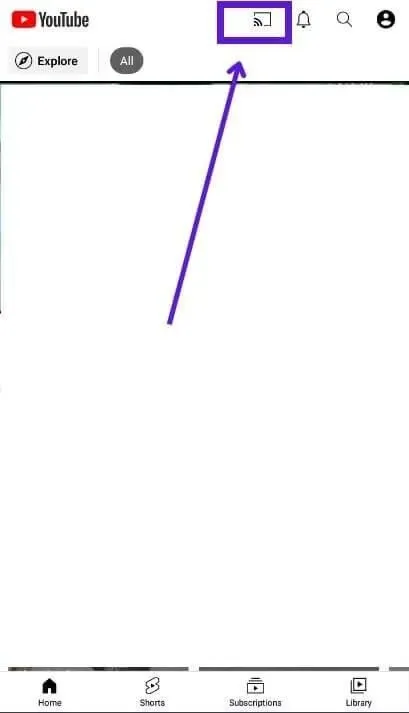
- A list of available devices will open. Choose Roku TV.
- Confirm from your Roku to start casting.
How to mirror from Mac to Roku?
- Check if your Roku TV supports AirPlay
- Turn on AirPlay on Roku
- Turn on AirPlay on Mac to start mirroring
1. Check if your Roku TV supports AirPlay.
Apple devices mirror or stream using AirPlay. The latest Roku devices can connect to iPhones, iPads, and Macs using AirPlay. However, check if your Roku supports it by doing the following:
- Press the Home button on the remote.
- Go to settings.
- If you see “Apple AirPlay and HomeKit”in the list of options, your Roku supports AirPlay.

2. Turn on AirPlay on Roku
- Connect Roku and Mac to the same network.
- On your Roku remote, press the Home button.
- Go to Settings > Apple AirPlay & HomeKit.
- Turn on AirPlay.
3. Turn on AirPlay on Mac to start mirroring
- Open the Apple menu and select System Preferences.
- Select Displays.
- On the next screen, find “Show mirroring options in the menu bar when available”and check the box.
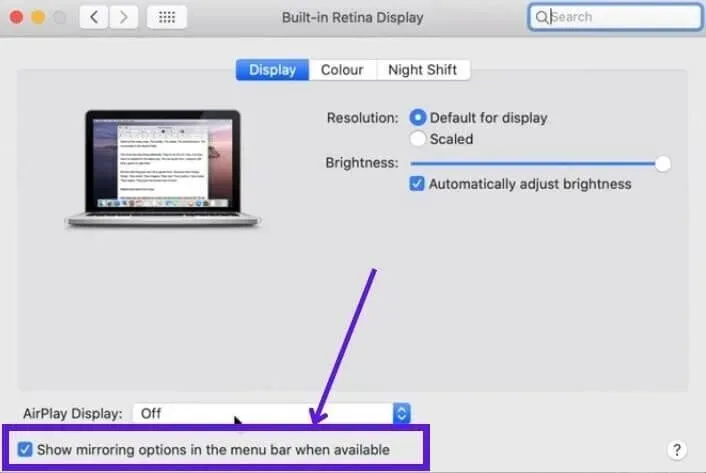
- To connect to Roku, click the AirPlay icon in the menu bar (screen with a triangle).
- Choose Roku.
- A passcode may appear on your Roku TV screen, enter it on your Mac.
- Screen mirroring starts.
- To stop, click the AirPlay icon in the menu bar on a Mac and choose Turn AirPlay Off.
Screen mirroring your iPhone or iPad in Roku
iPhone and iPad also use AirPlay for screen mirroring and casting. Use the method below to mirror your iPhone or iPad to Roku TV:
- Connect Roku and your iOS device to the same network.
- Press the Home button on your Roku remote and go to Settings > Apple AirPlay & HomeKit.
- Turn on AirPlay.
- On your iPhone, go to Control Center and tap Screen Mirroring or the Screen Mirroring icon (two screens).
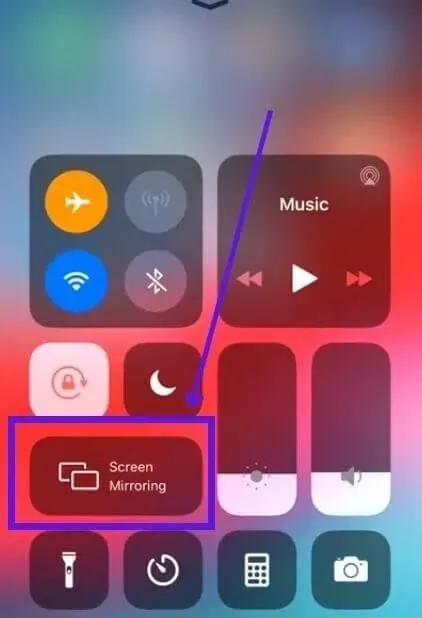
- It will look for AirPlay displays. Select your Roku device from the list.
- Get the code on your Roku TV screen and enter it on your iPhone.
- Start mirroring.
- To stop, tap the Mirroring icon in the Control Center and select Stop Mirroring.
Stream iPhone or iPad to Roku TV
The broadcast option is better if you want to stream or mirror something from your iPhone to Roku, but also want to continue your activities on your iPhone.
- Connect your iPhone and Roku device to the same network.
- Go to Roku Settings > Apple AirPlay & HomeKit > Enable AirPlay.
- Open the app on the iPhone with the “Broadcast”option.
- Tap AirPlay, the AirPlay icon (triangle screen), or the broadcast icon (signal screen), depending on the app. In some apps, you may have to tap the Share icon first before tapping the AirPlay icon.
- Select Roku from the list of devices.
Conclusion
Screen mirroring and casting are quick and easy ways to watch media from your computer or mobile phone on a big screen. Use the methods above to mirror or cast from different devices to your Roku TV.
FAQ
Why won’t my Roku connect to my PC?
– Your Roku or PC does not support Miracast. – Network type is not set to “Private.”
How do I enable screen mirroring on my Roku?
To enable screen mirroring on Roku: – Press the Home button on your remote. – Go to Settings > System > Screen mirroring. – Select Prompt if you want to manually allow each connection, or select Always Allow to allow any wireless display. connection to your Roku.
How to make a screencast without Miracast?
You can use an HDMI cable for screencasting or screen mirroring without Miracast. Thanks to this, you can mirror your computer screen on any TV, even if it’s not a smart TV.
How do I connect my computer to my TCL Roku TV?
To connect your computer to a TCL Roku TV: – Press the Home button on your Roku remote and select Settings > System > Screen Mirroring > Prompt or Always Allow. – On a Windows PC, go to the Action Center by clicking on the notification area. in the lower right corner of the screen. Select Connect. – Select your Roku TV from the list and connect. – Allow connection with Roku TV.
